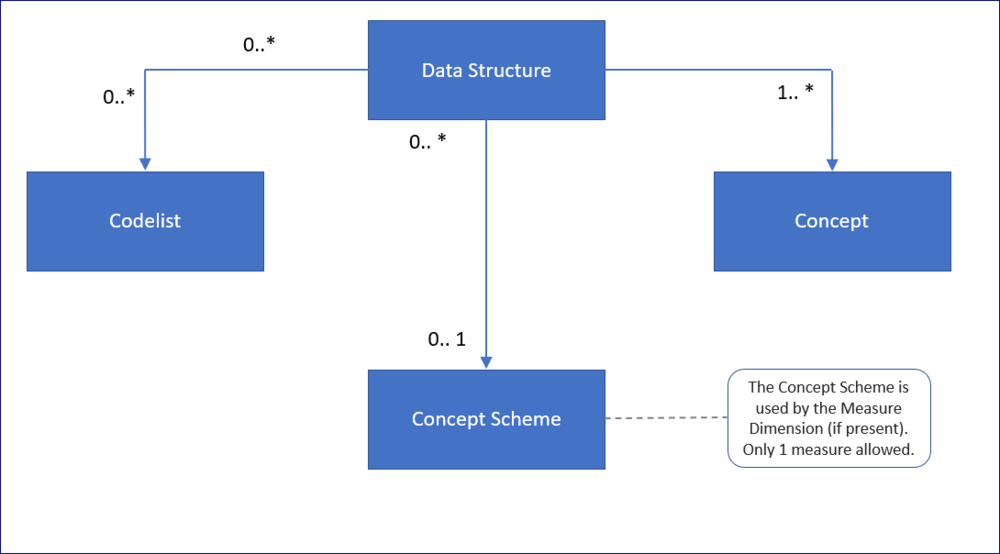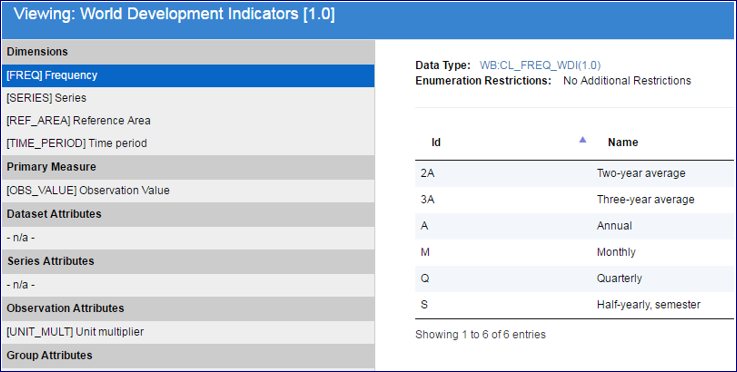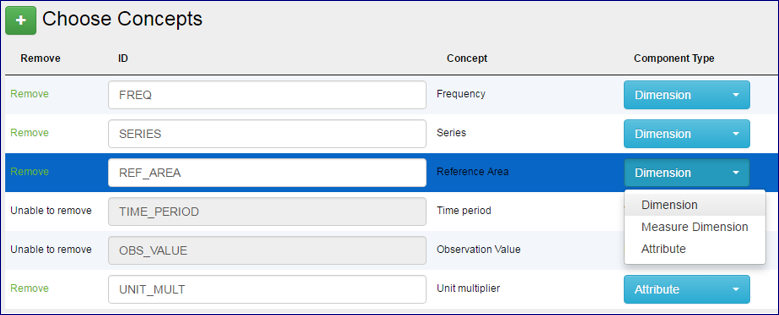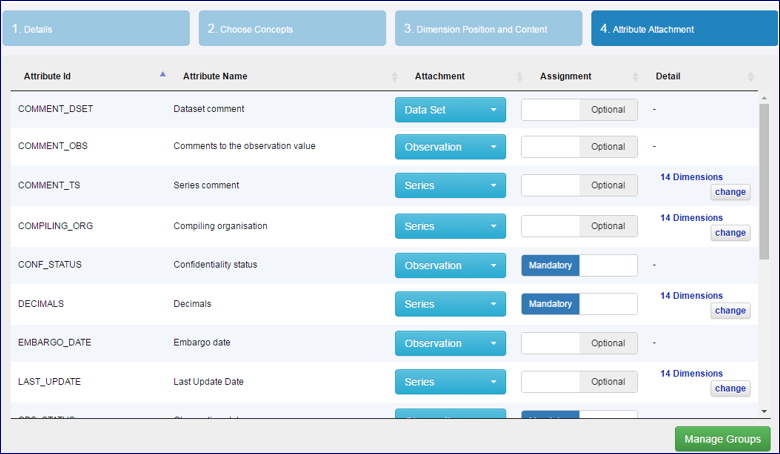Data Structure Definitions
Overview
A Data Structure Definition (DSD) defines a dataset in terms of its Dimensionality and allowable content. All reported datasets must conform to the definition defined by the DSD.
A DSD Consists of Dimensions, Attributes, and Measures, collectively these are termed Components. Each Component of a DSD references a Concept to provide a semantic meaning, and optionally a Codelist to provide an enumerated list of allowable content for reported data.
A DSD can include a special type of Dimension known as a Measure Dimension. he Measure Dimension supports the use case of multiple measures. Unlike a ‘normal’ Dimension, the Measure Dimension cannot reference a Codelist, however it must reference a Concept Scheme which is used to list the allowable measures. Each Concept in the Concept Scheme may provide its own representation which can be enumerated (Codelist) or non-enumerated. When data is reported for the Measure Dimension, the allowable values will depend on the Concept that is being reported in the linked Concept Scheme.
When Viewing a DSD the Components of the DSD are displayed by showing the Name of the Concept as the Component label, and the allowable content, which may be the referenced Codelist, as shown below.
Wizard
The steps in a DSD Wizard includes step 1 which provides the generic, high level details about the Category Scheme. See [Structure creating in the Structures Reference options.]
The second step of the Wizard allows the user to define all the other Concepts which will be used by the DSD. Each Concept can be assigned a role of Dimension, Measure Dimension, or Attribute.
The third step of the wizard allows the user to define the allowable content for each Component. If the Concept has a default Representation this will be selected by default, however this Representation can be changed if required.
The allowable content can be enumerated (which is a reference to a Codelist) or non-enumerated (for example Text, Integer, Double, Boolean etc). The allowable content defines what data a user can report when they are supplying a dataset.
The final step of the Wizard is to define the assignment status (required or optional) and attachment level (dataset, series, dimension group, observation, group) of Attributes as shown in the screenshot below.
Back to [Structures Reference options]
The purpose of each attachment levels is described below.




